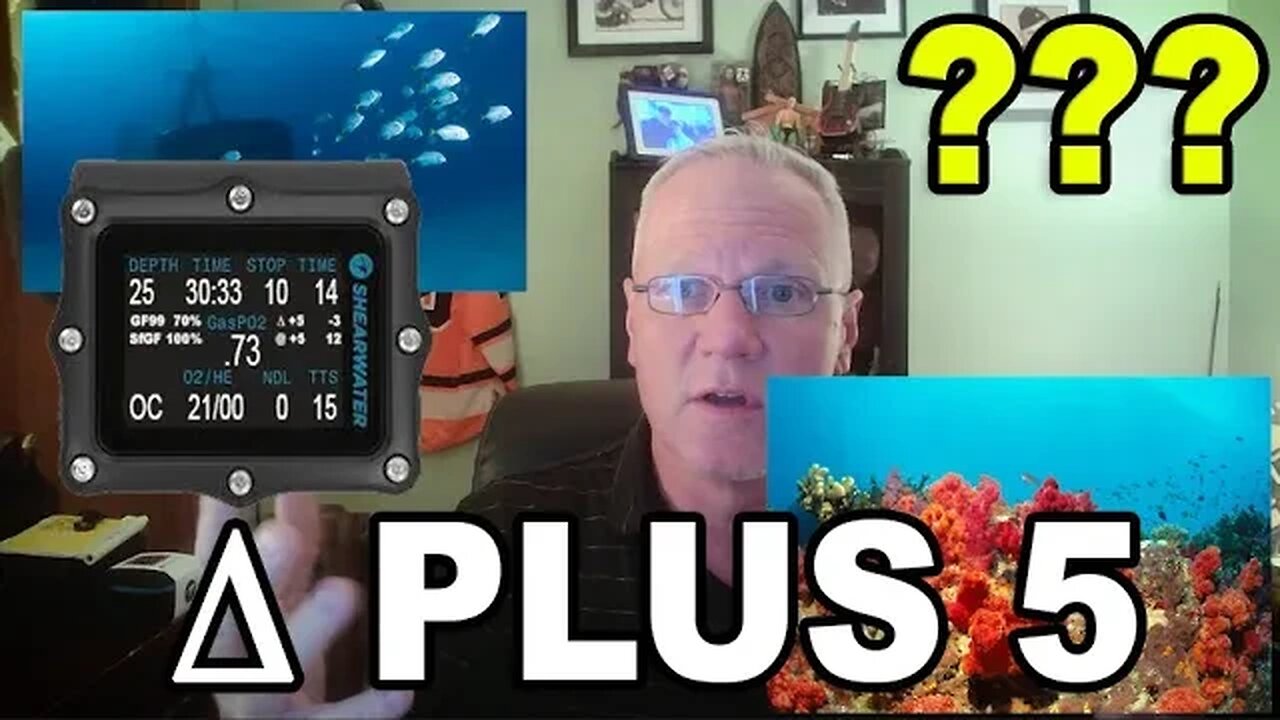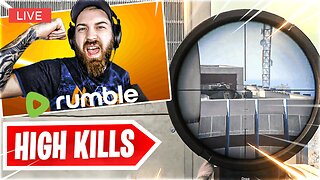Premium Only Content

Demystifying Shearwater DELTA PLUS 5: Is it a game-changer?
“At plus 5” is the TTS if remaining at the current depth for 5 more minutes. This can be used as a measure of how fast you are ongassing or off-gassing.
“At plus 5” is the TTS if remaining at the current depth for 5 more minutes. This can be used as a measure of how fast you are ongassing or off-gassing.
The predicted change in TTS if you were to stay at the current depth for 5 more minutes. A positive “Delta plus 5” indicates that you are ongassing the leading tissue while a negative number indicates that you are off-gassing the leading tissue.”
So, what exactly is "Delta plus 5 and At Plus 5" on your Shearwater computer?
These are simple indicators that you can use to identify what would happen to your time to surface if you stay at your current depth for an additional 5 minutes. In essence, it's a handy measure of how fast your body is either absorbing or off-gassing nitrogen. It's like a little diving crystal ball, giving you insights into your dive's future.
Now, here's where it gets interesting. If your current depth is shallower than your average depth, you're essentially off-gassing. Staying at this depth can result in a lower Total Time to Surface (TTS) at the end of your dive if you remain there for a period of time. Think of it as off-gassing at a less than ideal depth.
But how much are you off-gassing? That's where Delta Plus 5 or @ Plus 5 comes into play. Let's break it down with an example.
You were at a depth of 40 meters but You're now at a depth of 25 meters, and your current TTS is 15 minutes if you ascend right now.
However, you still want to explore for an extra 5 minutes. What happens to your TTS?
Delta Plus 5 tells you that after those 5 extra minutes at your current depth, your TTS will be three minutes less than it is right now. In other words, you're off-gassing at this depth, and due to the current depth being shallower than your average depth you would now have a delta of -3, thus reducing your TTS by 3 minutes and allowing you 5 extra minutes at the new depth. So, it's a trade-off: two extra minutes of off-gassing for five more minutes of underwater fun. Worth it, right?
To put this more simply… TTS or Total time to the surface is your time to the surface right now…Delta plus 5 gives you an indication of how long it will take you to ascend to the surface if you remain at your current depth for 5 more minutes.
With this information, and through the indicator of being either plus or minus, you can determine the efficiency of your on or off gassing.
Now, the only difference between Delta Plus 5 and @ Plus 5 is how the numbers are presented to the diver. Delta Plus 5 focuses solely on the change in TTS, while @ Plus 5 predicts what your TTS will be five minutes from now if you don't change depth. Same numbers, just a different way to look at it.
But even if you find these calculations a bit mind-boggling, they're still incredibly useful. Knowing what those extra 5 minutes at your current depth will cost you in TTS can be a game-changer, especially when you spot something exciting towards the end of your dive.
Now, remember, the average depth I mentioned is just a rough approximation. Shearwater's computers use a complex algorithm that considers various tissue compartments with different parameters, like m-values, tissue speeds, and gradient factors. It's all about giving you a general concept of your off-gassing dynamics.
Another way to monitor your current gradient factor on nitrogen loading is with the GF 99 and Surf Gradient Factor.
GF99, which stands for Gradient Factor 99, keeps a close eye on your gas absorption and the leading tissue compartment. It shows you the current percentage of gas load against the M-value, helping you understand when you're on-gassing or approaching super-saturation.
During a dive, this monitor will show the diver when they are on-gassing and when the lead tissue compartment is beginning to increase in saturation toward the M-Value or supersaturation in the percentage gradient.
0% means the leading tissue super-saturation is equal to ambient pressure and Displays “On Gas” when tissue tension is less than the breathered inert gas pressure.
100% means the leading tissue super-saturation is equal to the original M-Value limit in the Bühlmann ZHL-16C model. GF99 is displayed in Yellow when the current gradient factor modified M-Value (GF High) is exceeded. GF99 is displayed in Red when 100% (un-modified M-Value) is exceeded.
And then there's SURGF, the Surface Gradient Factor monitor. This provides a predictive analysis of your total percentage of M-value or gradient if you decide to surface at that moment. It's like having a safety net, allowing you to stay informed about your dive's safety margin.
-
 LIVE
LIVE
Tundra Gaming Live
6 hours agoThe Worlds Okayest War Thunder Stream//FORMER F-16 MAINTAINER//77th FS//#rumblefam
313 watching -
 LIVE
LIVE
DemolitionDx
1 hour agoSunday night COD with friends.
400 watching -
 2:10:14
2:10:14
vivafrei
12 hours agoEp. 237: More Trump Cabinet Picks! MAHA or Slap in the Face? Canada on Fire! Go Woke Go Broke & MORE
132K177 -
 LIVE
LIVE
SOLTEKGG
2 hours ago $1.63 earned🟢 First Day on RUMBLE!
248 watching -
 LIVE
LIVE
Vigilant News Network
5 hours agoCOVID-Vaccinated Hit With Grave New Reality | Media Blackout
2,546 watching -
 1:26:31
1:26:31
Josh Pate's College Football Show
5 hours ago $1.44 earnedSEC Disaster Saturday | Major CFP Earthquake Coming | Officiating Is A Disaster | New Studio Debut
9.87K -
 1:43:05
1:43:05
Adam Does Movies
9 hours ago $2.79 earnedGladiator II Spoiler Conversation With Hack The Movies
14.3K -
 24:10
24:10
Bwian
9 hours agoI Don't Know What I'm Doing in Fortnite, But I Still Won...
11.4K1 -
 19:30
19:30
DeVory Darkins
11 hours ago $37.52 earnedJoe Rogan MOCKS The View as Bill Maher HUMILIATES Woke Scientist
85.8K121 -
 11:25:41
11:25:41
Scottish Viking Gaming
12 hours agoSUNDAY FUNDAY | Jump into my Sons of the Forest Game | DOO EET NOWWA!
86.8K1